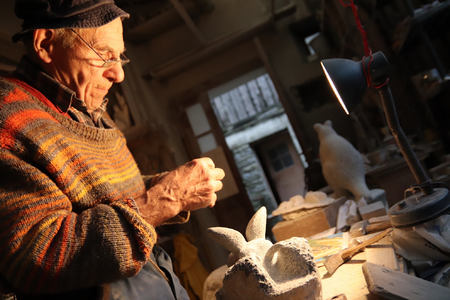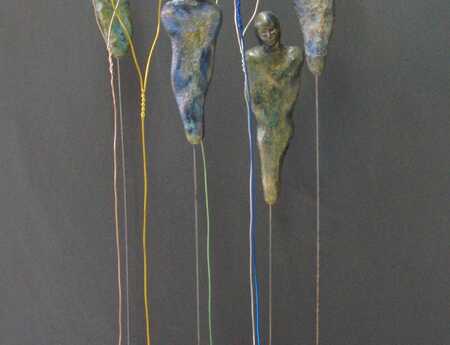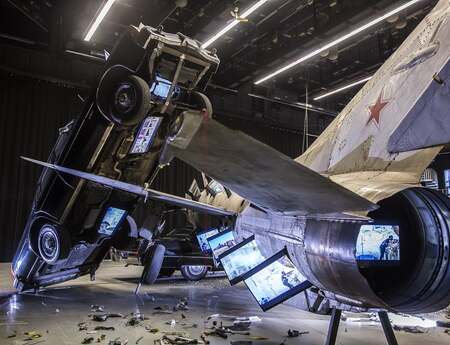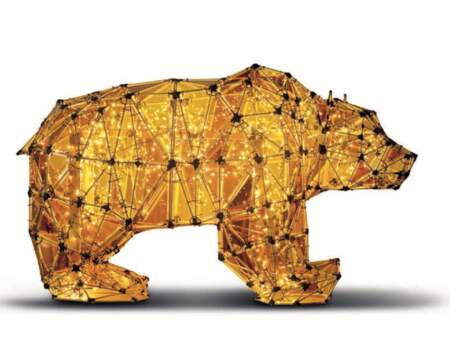The Art of Overcoming a Catastrophe
One year ago, parts of the mountain village of Bondo in Bergell, Switzerland, were buried by an avalanche of mud and boulders. The avalanche of boulders stopped just short of the workshop of sculptor Ernesto Picenoni. Since then, the 79-year-old has been pulling stones out of the rubble and sculpting figures out of them.
Whenever Ernesto Picenoni runs out of stones, he returns to the scene of the catastrophe. The other villagers do not go back as the painful pictures would return - but this is where Picenoni finds the material for his art.
On a rainy Wednesday in November Pincenoni steps out of his workshop, and passes the sandbags that lean against the workshop wall. Like a barricade, the bags stopped the mud and debris that shot down from Piz Cengalo on August 23, 2017 and prevented Picenoni's workshop from being destroyed. The avalanche carried two nearby houses down to the riverbed and flooded the road that led into the village. The inhabitants had to be flown out by helicopter and they were not allowed to return home for seven weeks. Picenoni was also not allowed to enter his workshop during that time.
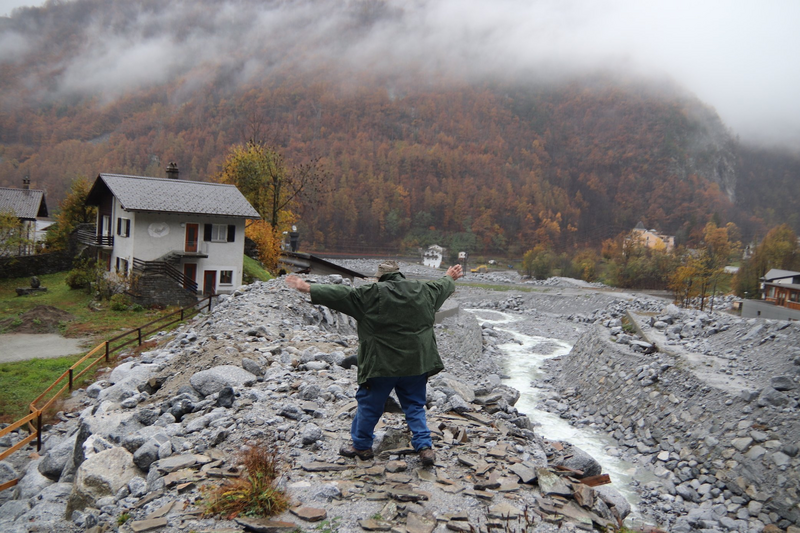
Ernesto Picenoni passed the carpenter's workshop, which is a few metres away opposite his workshop. A second avalanche two days after the large one had swept away the carpenter’s warehouses and wood supplies and mud entered the workshop, destroying the machines. Today, more than a year later, the company is up and running again. Picenoni looks briefly through the window and walks across the employee car park towards a huge wall of rubble. This new wall was erected by the excavators after the third avalanche in September 2017. It was to protect the village from a new catastrophe, since the Piz Cengalo was far from dormant.
Surveying for new boulders Picenoni notices it from afar: the perfect stone. Dark grey in colour, it sticks out from all the brighter stones in the light grey wall. The boulders all came from the top of the mountain about six kilometres away. They were washed down by water and mud, approximately four million cubic metres in just a month. The dark stone comes from the summit below. The mud avalanche carried it along and left it there. Ernesto Picenoni gently strokes the discovered object with his hand, as if it was a great treasure . The surface is smooth and cold, and wet from the rain.
The dust of the workshop has crawled under Picenoni's fingernails. The lower joint of his middle finger is rheumatically swollen and his finger crooked. His hands had worked many hours and dragged countless stones. Picenoni started out as a bricklayer. He made his first figures out of cement half a century ago: an eagle, a fox, a lamb. The figures still stand in his workshop today. On the fox’s snout sit dusty sunglasses. Picenoni taught himself how to sculpt with these stones. In the beginning, his left hand was blue because of how often he had missed with his hammer.
Picenoni had discovered the perfect dark stone a few days ago when he walked through the village. He saw it and thought, "That's my stone." To become Picenoni’s stone, it must be softer than granite. It must also be a brown, grey or green colour. Picenoni continued to stroke his hand over the dark soapstone. At the next opportunity, he would ask a carpenter to take the stone to his workshop with the lift truck. With his cart and his bare hands, Picenoni can only handle smaller stones – (approximately one cubic metre weighs three tons).
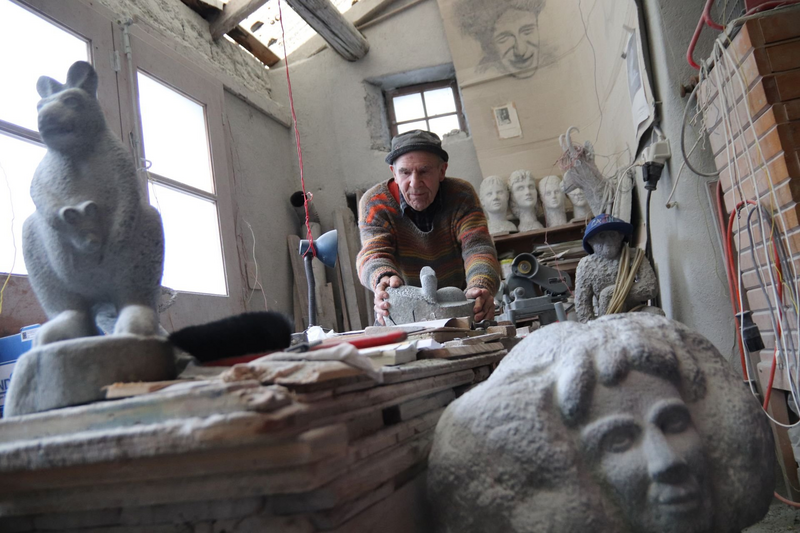
Picenoni goes back to the street, beyond his workshop and up the mountain. He passes the house that is now equipped with a red alarm siren to warn the villagers before the next avalanche. On the left is the house of his older brother Cornelio. He only ever visited on holidays and died in 2015. The young family who rented the upper flat moved out after the avalanche. The house is now abandoned, the empty windows staring at the wall of rubble. The rubble is piled up to the entrance stairs. Picenoni climbs over the nailed lattice fence that surrounds the wall. He notices the sign that stands beside it states "Sperrzone" (restricted zone). A boulder is stuck in the wall that looks like an oval pebble, flat at one end, as if someone had cut off a slice with a knife. This would be another treasure. But Picenoni will have to leave it here for now, as it would be too difficult to recover.
Picenoni was able to drag three smaller stones from the riverbed into his workshop. The artist has turned it into a face. The face stands in front of the worktable and looks towards the door. Nearby, on the table stands a kangaroo with a joey in a pouch. This is Picenoni's most recent work. Picenoni is afraid of flying but sculpting kangaroos, he humours himself by saying this saves himself the flight to Australia. He copied the proportions of the kangaroo from a toy figure. Above his workbench it stands on the shelf, next to dusty dolls.
Picenoni is currently working on a bee. He has already carved the body, wings and antennae, but the legs are still missing. Picenoni wants to shape it as naturally as possible. On the workbench he has chiselled "Grzimek's animal life". In the photo a bee collects nectar from a flower.
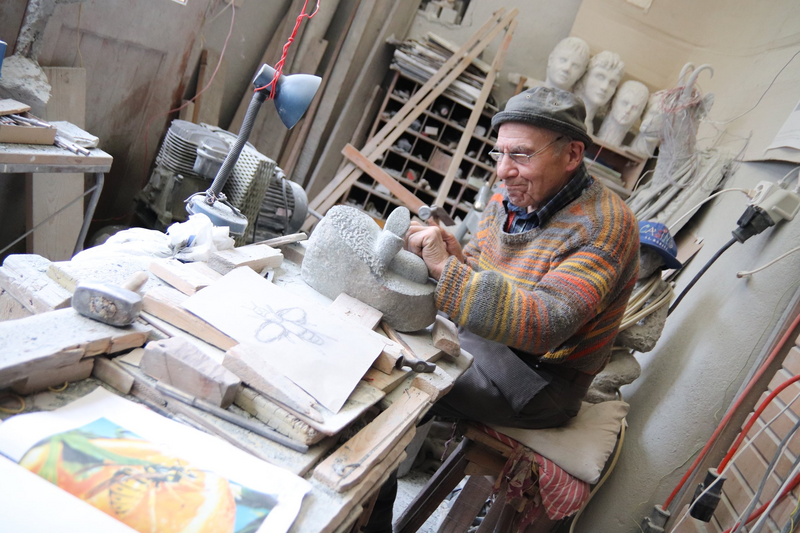
Due to the fact there is no more space in his workshop, Picenoni has moved more than a hundred figures into a cellar. In a stable at the other end of the village, he has even more figures under tarpaulins. His work can be found behind every cupboard door he opens and in every drawer. Picenoni has been making figures out of stone since 1982, and he has only sold a about ten of them in his 36 years. A stranger once wanted a fish made of stone. When he came three days later to pick it up, the man offered Picenoni 200 francs. Only 200 francs for three days of work was ridiculous to Picenoni so he decided not to sell the fish or any figure. He decided he will only ‘give it away or keep it’ ever since. There is nothing in between for Picenoni.
Picenoni climbed up the wall behind his brother's house and looked out over the riverbed. This is another place the excavators had widened to a catch basin after a previous avalanche in order to prevent an even greater catastrophe in August 2017. Up here Picenoni heard the Bondasca rushing. The riverbed down below resembles a moon landscape of rocks, stones, boulders. On the opposite side of the river is the district of Promontogno, where Picenoni was born and went to school. The former village school was spared and has now become the town hall.
Picenoni turned around and trudged up the huge wall, a bent old man in the midst of a catastrophe. If he wants to visit his 100 figures in the cellar, he must cross the new suspension bridge. The bridge spans 17 metres high over the Bondasca and connects the old Bondo with Promontogno. Just below, exposed beams are a reminder of the old wooden bridge that the military had to blow up. To the left and right stood the two houses that were carried away by the mud masses. Picenoni was reminded of the Titanic in the final stages of sinking, when he saw the house drifting in the mud. "The mud looked like chocolate," he says.
In the middle of the wall, Picenoni spotted another stone. Grey, brown, green grained, soapstone – the perfect combination. He tried to roll it down towards the workshop. Picenoni grasped it with both hands and pulled with all his strength. He made a few turns, but he couldn’t get it out any further. He must come back. In a few days he'll get his cart out of the cellar, push it up to the wall and get to work on the stone again. Picenoni know he must have it because he already has idea about what he will shape out of it: a mouse or a mushroom.
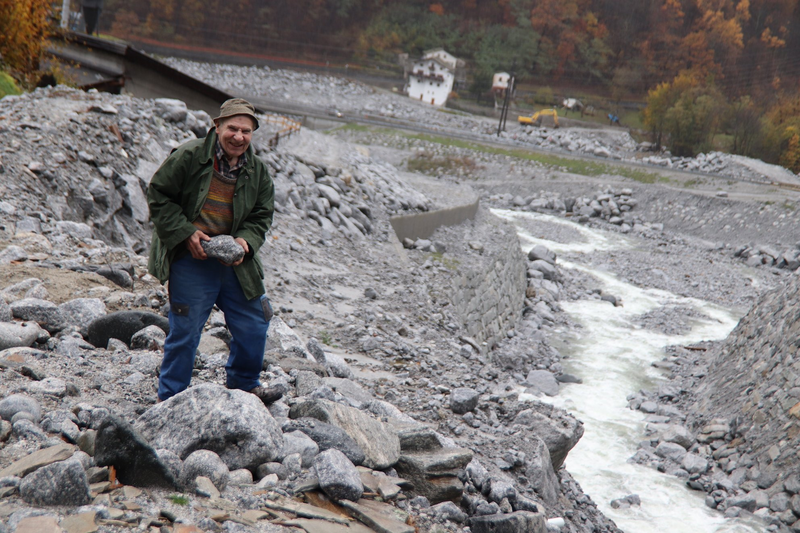
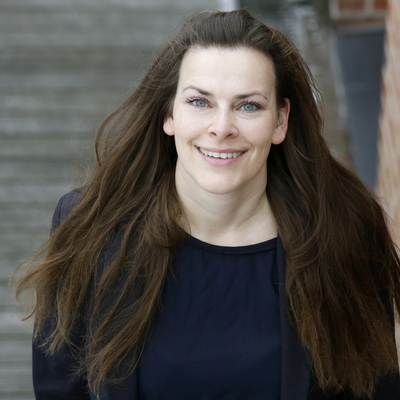
Author:
Anne Neul is an editor, freelance author and contextual coach in training and lives near Bielefeld.
